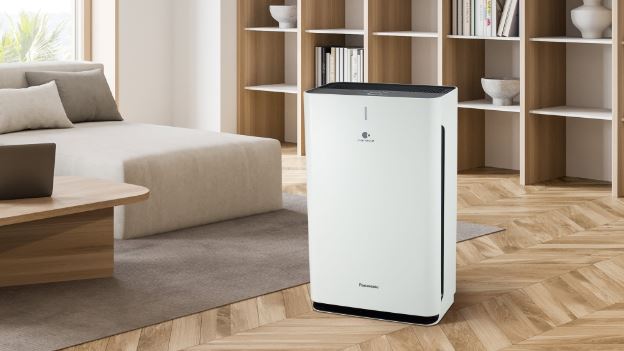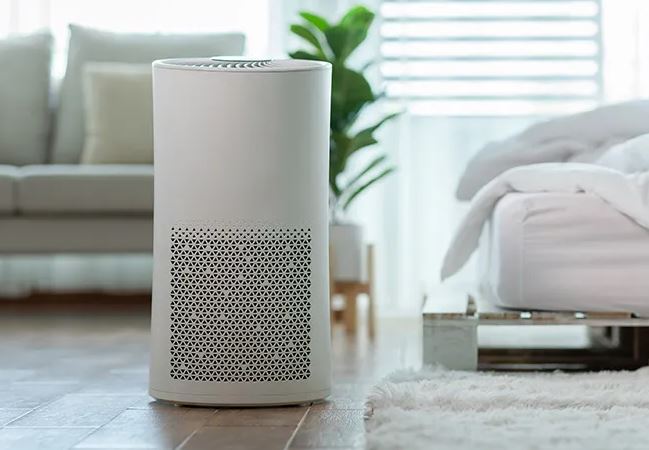The Power of Ionizers: How They Work and Their Benefits
The Power of Ionizers: How They Work and Their Benefits
Blog Article
In an era of heightened health awareness, the air we breathe in has become an increasingly important consideration for homeowners and health-conscious individuals. With growing concerns over air pollution and a greater awareness of the influence of indoor air quality on overall health on our health, it's no surprise that the demand for air purifiers is on the rise.
Air purifiers are devices that eliminate airborne contaminants in a room, promoting healthier indoor air. They are particularly beneficial for people with allergies, asthma, or other respiratory issues as they can significantly lower the levels of allergens, pollutants, and irritants in the air. Healthy individuals, too can benefit from air purifiers, as they give added assurance and protect against airborne pathogens.
This article will explore in detail the fascinating realm of air purifiers, exploring their benefits, the variety of options on the market, crucial aspects to think about when making a purchasing decision, and how to get the most out of your device. By the end, you should have a thorough grasp of air purifiers and be able to choose wisely about whether investing in one is the best option for you and your loved ones.

Unraveling Indoor Air Contaminants and Their Impact on Health
To understand why air purifiers are essential, it's key to comprehending the variety of contaminants they address and the possible effects of contact with these pollutants.
Indoor air pollutants can be broadly categorized into the following three categories:
- Particulate Contaminants: This includes solid and liquid droplets suspended in the air. Examples include dust, smoke, pollen, pet dander, mold spores, and more. Particulate matter can trigger respiratory problems and cause allergic flare-ups.
- Understanding Volatile Organic Compounds: VOCs are gases emitted from various solids or liquids. Sources of VOCs include cleaning agents, paints, aerosol sprays, pesticides, and similar products. Exposure to VOCs can lead to irritation of the eyes, nose, and throat, as well as headaches and nausea.
- Biological Hazards: These include various microorganisms, including bacteria, viruses, mold, and mildew. They can cause a variety of health problems, from mild allergic reactions to severe infections.
The impact of these contaminants on human health can vary significantly. For individuals with respiratory conditions or compromised immune systems, exposure to indoor air pollutants can lead to severe complications. Even those in good health, prolonged exposure over time to certain pollutants can increase the risk of respiratory conditions and other health concerns over time.

Unraveling Air Purification Technology
Air purifiers use a range of physical and chemical mechanisms to capture and remove pollutants from the air. Understanding the basic mechanisms employed by purifiers will help you appreciate their effectiveness and the array of models on the market.
Here are the core processes and cutting-edge technologies used in air purifiers:
- Filtration Excellence: This is the most common method used in air purifiers. It involves using filters to trap particles as air is passed through the filtration system. The filtration media varies, each designed to capture specific types of particles. For example:
- Pre-filters: The First Line of Defense: These are usually the initial barrier, capturing larger particles like dust, hair, and similar larger particles.
- HEPA Filtration: Unparalleled Performance: HEPA filters are remarkably proficient at capturing microscopic particles, including pollen, dust mites, and some bacteria and viruses. To be labeled a genuine HEPA filter, it must trap a minimum of 99.97% of particles down to 0.3 microns in size.
- charcoal filtration: These filters are designed to effectively remove odors, VOCs, and gaseous compounds.
- Ionizers: Charging Ahead: Ionizers use electrical charges to create ions with a negative charge, which bind to particles in the air. The charged particles are drawn to nearby surfaces or the purifier itself.
- Ozone's Double-Edged Sword: Some air purifiers use ozone, a powerful oxidant, to break down pollutants. While effective, excessive ozone exposure carries risks so these types of purifiers should be used with care and only when no one is present.
- UV Light: Shining a Light on Purification: UV light can be used to destroy biological contaminants like bacteria, viruses, and mold spores. UV light is commonly paired with filtration to trap particles, and UV light provides an extra layer of protection against biological hazards.
Choosing the Right Air Purifier
With a plethora of options available, selecting the right air purifier can be a difficult decision. It's important to consider multiple factors to ensure you make the correct choice for your particular needs and room size.
Here are some crucial points to consider:
- Considering Room Size: Air purifiers are typically designed for specific areas, so it's important to choose a model that can adequately cater to the room size. Most purifiers will list a maximum room size or a Clean Air Delivery Rate (CADR), which indicates the volume of filtered air delivered per minute.
- Understanding Contaminants: Identify the types of pollutants you want to target. If you suffer from allergies, look for a purifier with a HEPA filtration system. For odor removal, consider a model with a activated carbon filter. If you're concerned about viral and bacterial threats, a purifier with UV light technology might be best.
- Whisper-quiet Performance: Air purifiers can produce different noise levels, so if you plan to use it in a serene environment, look for models with a sleep mode or quiet setting.
- Maintenance and Costs: Consider the regular maintenance and associated costs of the purifier. HEPA filters generally require replacement every 6 to 12 months, depending on use and environmental factors. Factor in the cost of replacement filters when making your choice.
- Smart Innovations: Many purifiers offer smart features like wireless connectivity, air quality sensors, and smart modes, allowing remote control and monitoring. These features can improve your purifier's performance and ease of use.
Unlocking the Full Potential of Your Air Purifier
Once you've made your selection and installed it, there are several things you can do to ensure it operates at optimal levels and delivers the optimal results:
- Place it in the Right Location: Position your purifier in an unobstructed area, avoiding walls and furniture, to ensure efficient air circulation. Avoid placing it near external openings as drafts can disrupt the purifier's effectiveness.
- Keep it Running: For the best results, it's recommended to run your purifier continuously. Many models have energy-saving features or smart modes that adapt to the air quality, so you can maintain healthy air quality while conserving energy.
- Regular Filter Care: Regularly check and replace filters as recommended by the manufacturer. Over time, filters become clogged with particles, reducing the purifier's efficiency. Set a reminder for filter changes so you don't forget.
- Limiting Indoor Pollutants: Alongside using an air purifier, take steps to reduce indoor pollutants. This could include vacuuming, dusting, choosing natural cleaning alternatives, and limiting aerosol and chemical products. Report this page